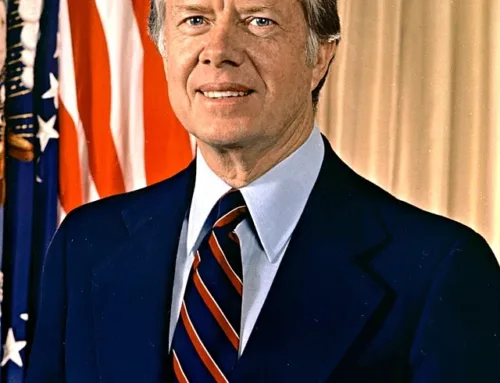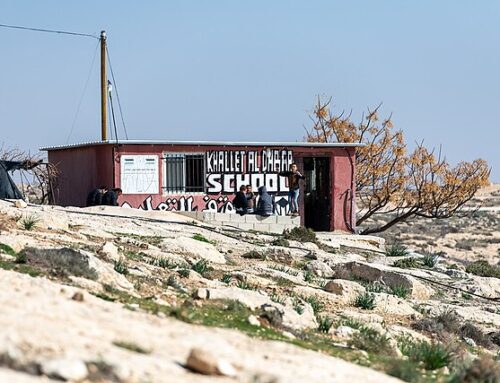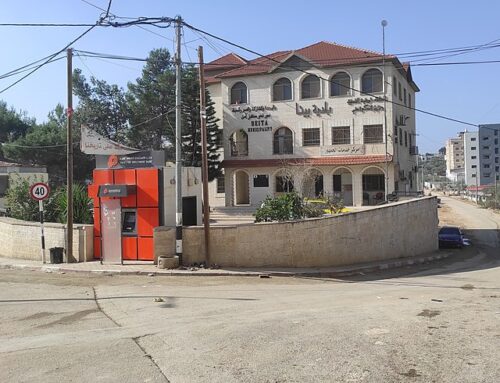When I was studying Earth science back in the 10th grade, learning to identify the characteristics of various rocks and minerals, I never imagined that, one day, this seemingly bland branch of scientific inquiry could become the generator of political controversy.
But, lo and behold, the dissolution and sedimentation rates of dolomite and limestone have now become the catalyst for the latest dispute in Israel involving the place of Jewish religious belief in the country’s public square.
The story began last Sunday at the Soreq Cave Nature Reserve, west of Jerusalem. A science teacher leading a first and second grade field trip was informed by their official Israel Nature and Parks Authority guide that the guide was not allowed to reveal the true age of the cave’s stalactite and stalagmite formations in order not to offend the sensibilities of haredi (Ultra-Orthodox) visitors and their belief regarding the number of years since Creation. Here’s how the teacher put it in Haaretz newspaper:
“The guide kept telling the pupils that the formation of the stalactites takes many years, but she didn’t say how many. When I asked her how many years was she talking about, and asked her to tell the class, she said that she’s not allowed to say that it’s more than 5,000 years in order not to offend the students. I was shocked. We’re a science-oriented school, not an ultra-Orthodox one. How can you conceal these things from students?”
(Geological note: Some of the Soreq formations are more than 300,000 years old. Haredi Jews tend to subscribe to a literalist interpretation of the Old Testament, believing that the universe was created by God 5,770 years ago.)
The underlying struggle between science and a fundamentalist interpretation of religion is not unique to Israel or the Jewish people, of course. It has been played out in various locales, at various times, concerning various scientific disciplines: the Catholic Church vs. Galileo over Copernican astronomy, and the State of Tennessee vs. John Scopes over the teaching of evolution are but the most (in)famous examples.
But the Stalactite Cave incident is instructive in the Israeli context in that it demonstrates the rather oblique methodology generally used by the ultra-Orthodox community to gain a toehold for its viewpoints in all areas of society and culture.
Usually seeking to avoid a frontal collision with the secular community, at least at the start, a favored haredi PR tactic instead involves a plaintive request for brotherly compassion: “We implore you to do (or not do) such and such so as not to hurt the religious feelings of the ultra-Orthodox community!”
Women riding on public buses? Please put them at the back in order not to offend our sensibilities. The LGBT community wishes to hold a parade in Jerusalem? Please don’t grant a permit since it will offend our sensibilities. The government plans to relocate ancient graves (with permission of the country’s Chief Rabbis!) to allow construction of an expanded and fortified hospital ER in southern Israel? Well, you get the idea.
Little by little, of course, in small imperceptible ways, the well-intentioned desire not to offend allows a new consciousness to take root throughout all sectors of the population: A consciousness that is less tolerant, more a-scientific (if not superstitious) and less respectful of the legitimate sensibilities of the majority of Israelis, and Jews, who are not ultra-Orthodox.
And, sadly, when the “please don’t offend” request is ignored, more virulent tactics have often been brought into play by the ultra-Orthodox community in order to gain greater leverage in the public debate. Haredi rioting in Jerusalem, it’s been reported, frequently dwarfs the level of public disorder that broke out among Israel’s Palestinian citizens in October 2000 at the start of the second Intifada.
But tactics are only one aspect of the much larger question in Israel that, to date, has defied a solution: How to balance the needs of Israel’s varied and almost-incompatible sectors within the context of a single, ostensibly modern, Israeli democracy?
The data coming out of Israel are not encouraging. Among the haredi sector, faith in Israel’s Supreme Court has tumbled from an already paltry 19% in 2000 to a single-digit 9% this year. And, to underscore the point, over 100,000 haredim came out two weeks ago to demonstrate against the High Court’s ruling to end Ashkenazi-Sephardi segregation in a State-funded ultra-Orthodox school.
Resentment among a restive secular public is growing as well, with journalist Yair Lapid, son of the late Tommy Lapid, reportedly preparing to follow in his father’s footsteps and lead a new anti-clerical party in the next Israeli elections. And a recent poll showed that 48% of Israel’s secular Jews would consider voting for a party that focused on freedom of, and from, religion.
It never rains in Israel in July, but it sure looks as if storm clouds are building above the country’s secular and ultra-Orthodox communities.
Shabbat Shalom,
Ron Skolnik
Executive Director
Meretz USA






Leave A Comment